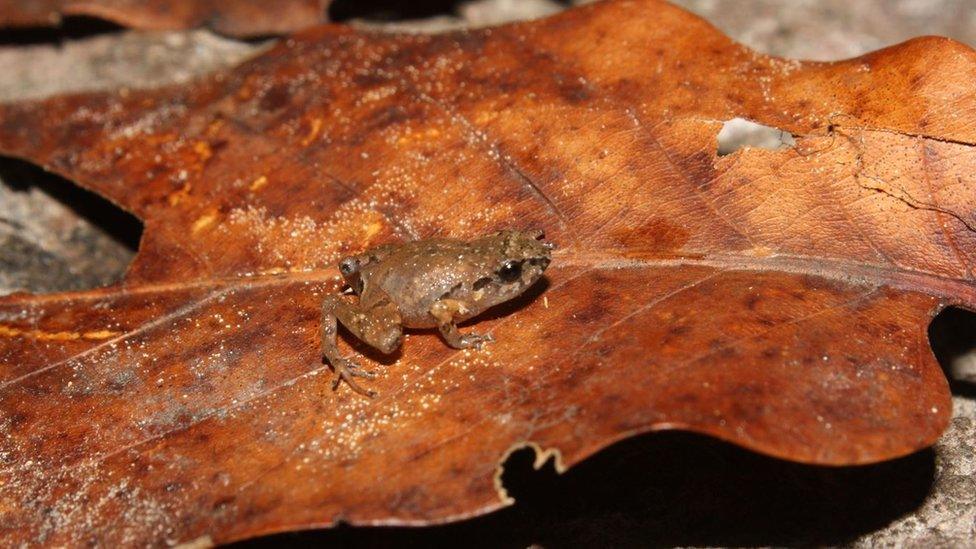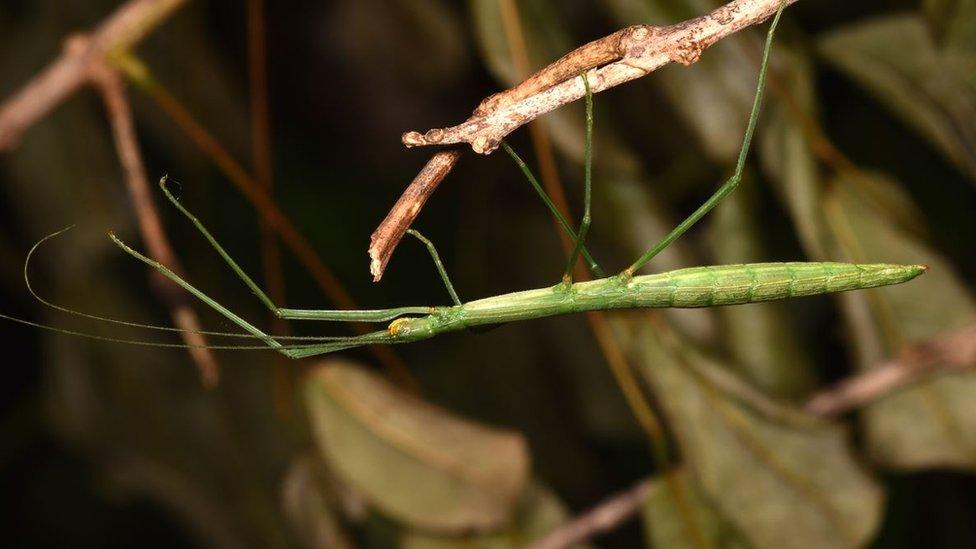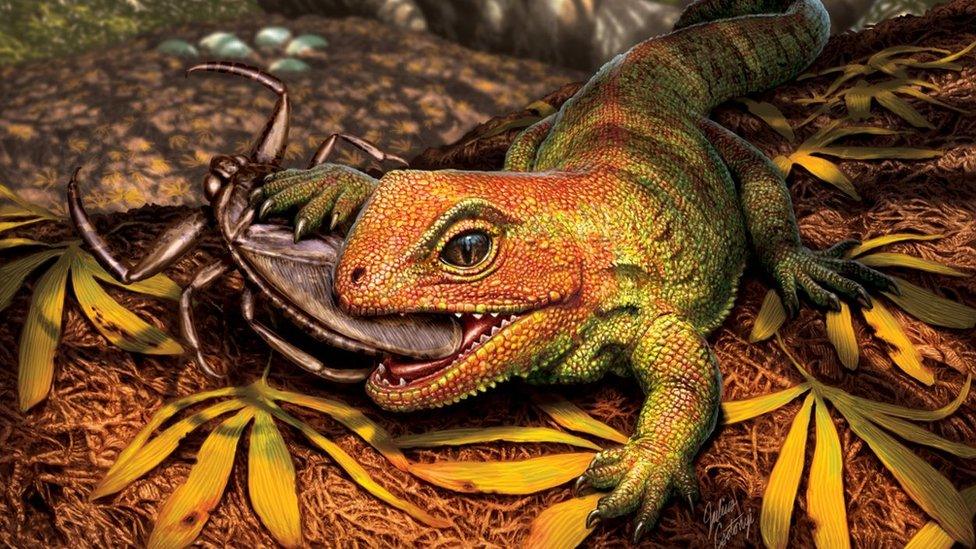Natural History Museum: Scientists reveal new animal and plant species identified in 2022
- Published
- comments

This tiny frog was discovered in Mexico and grows to just eight millimetres in length
Scientists at the Natural History Museum have revealed some of the new animal and plant species they uncovered in 2022.
They include frogs the size of a 1p coin and 19 new species of stick insects!
Prehistoric animals also feature in the list, such as three new species of dinosaurs and the oldest known lizard ever to have been found.
Experts hope that by giving them scientific names, they can be better protected in the future.
What did scientists find?

19 new species of stick insects were identified by experts at Natural History Museum this year!
As most of the animals on Earth are invertebrates - which means they don't have a backbone - it comes as no surprise that the majority of new species described this year fall into this category.
They included 84 new species of beetle, 34 species of moths, 13 species of trematode worms and two species of bumblebees in Asia.
However, the largest group of new discoveries was the wasp - with 85 new species identified.
These include some tiny creatures with what scientists describe as "beautiful, feather-like wings" that belong to a group containing some of the smallest insects in the world!.
Some vertebrates were also discovered by museum scientists, including a new species of gecko from the Seychelles, three species of fish and seven species of frogs.

An artist's impression of the 200-million-year-old lizard that was identified this year
Prehistoric animals were also uncovered this year, with three new species of dinosaurs named.
Two of those are armoured dinosaurs from China - including the oldest ever stegosaur to have been found.
The third new dinosaur described this year is a carnivorous species with tiny arms, found in northern Argentina.
At 70 million years old, it is helping experts understand how this part of the world responded to the asteroid that wiped the dinosaurs out.
It isn't only dinosaur fossils that have been identified - scientists found a 200-million-year-old fossil lizard that was hiding in the collections which turned out not only to be a new species, but also the oldest lizard known to science!
